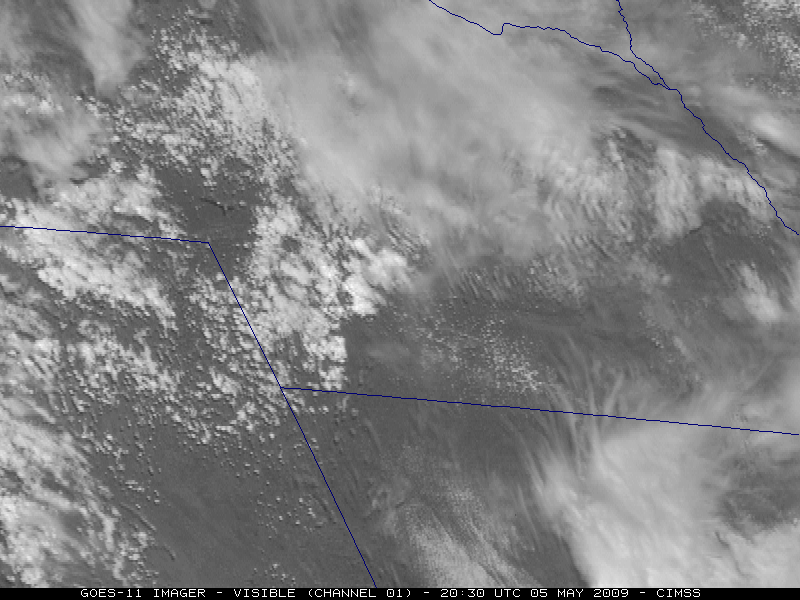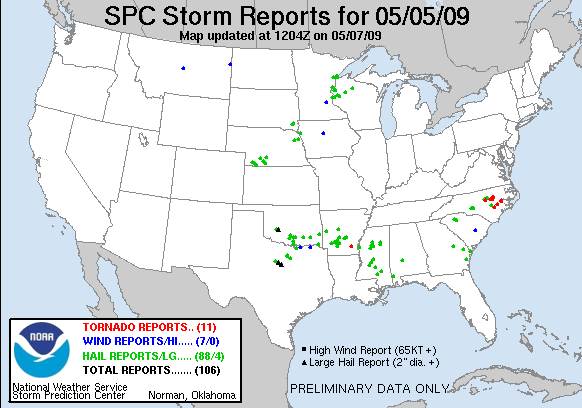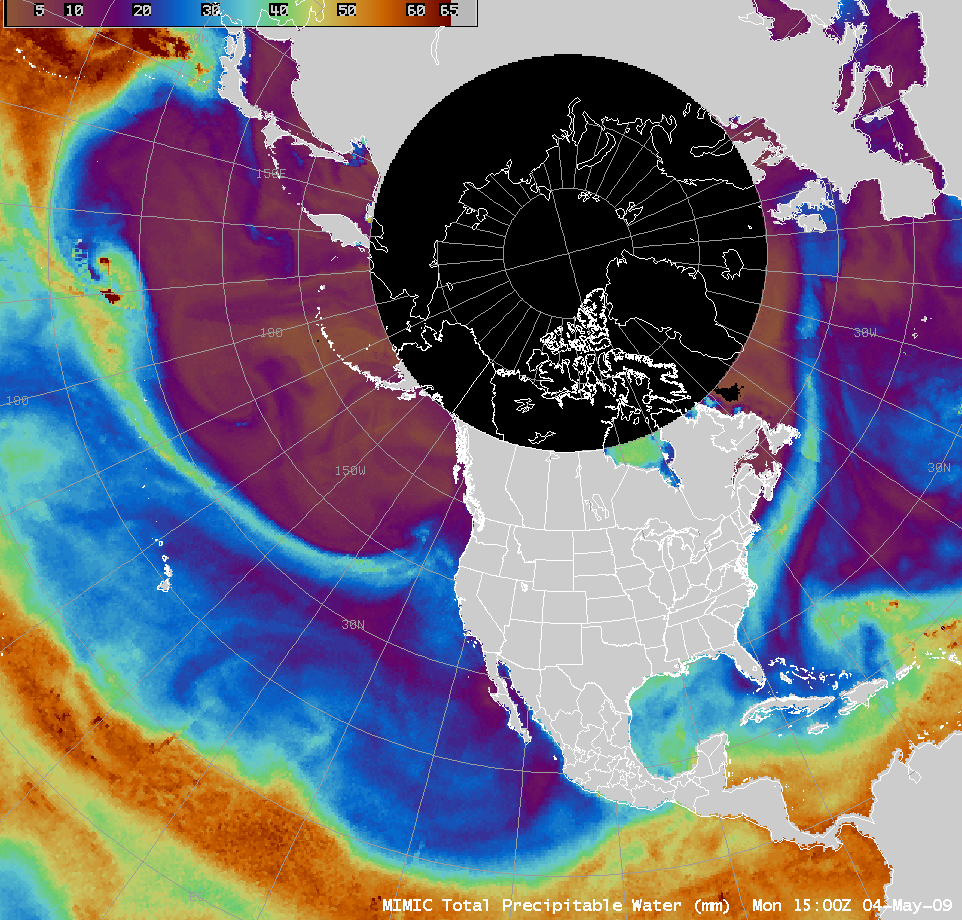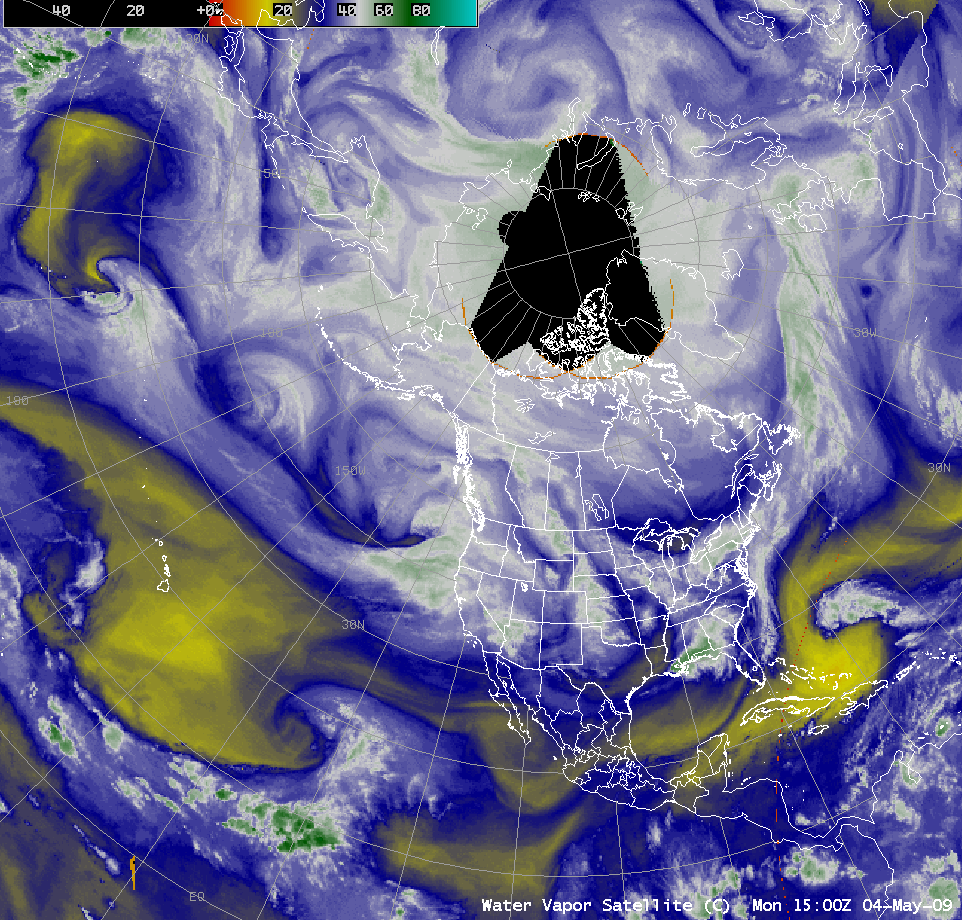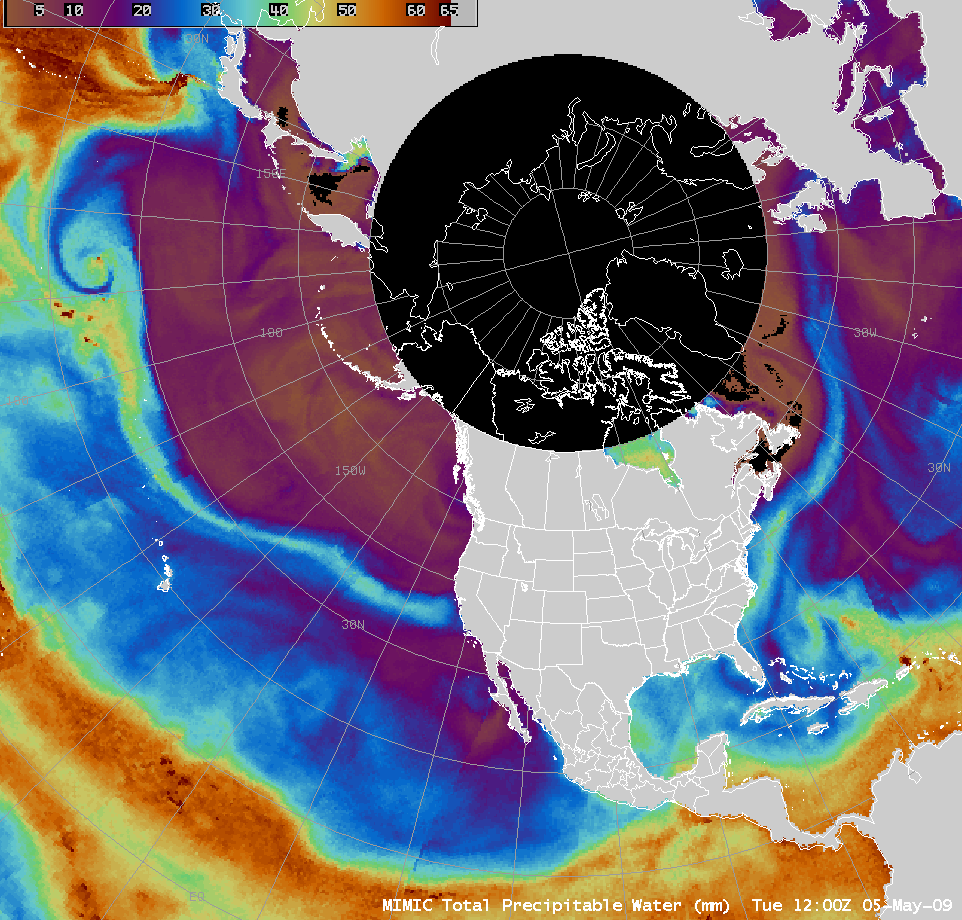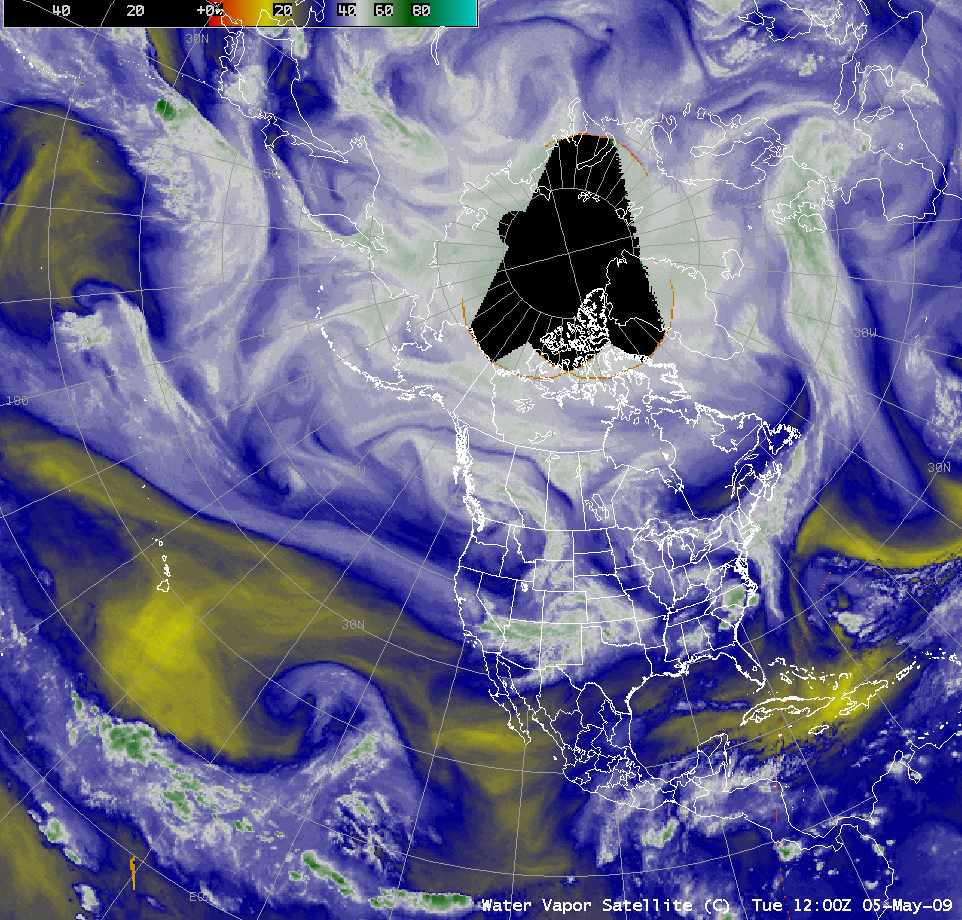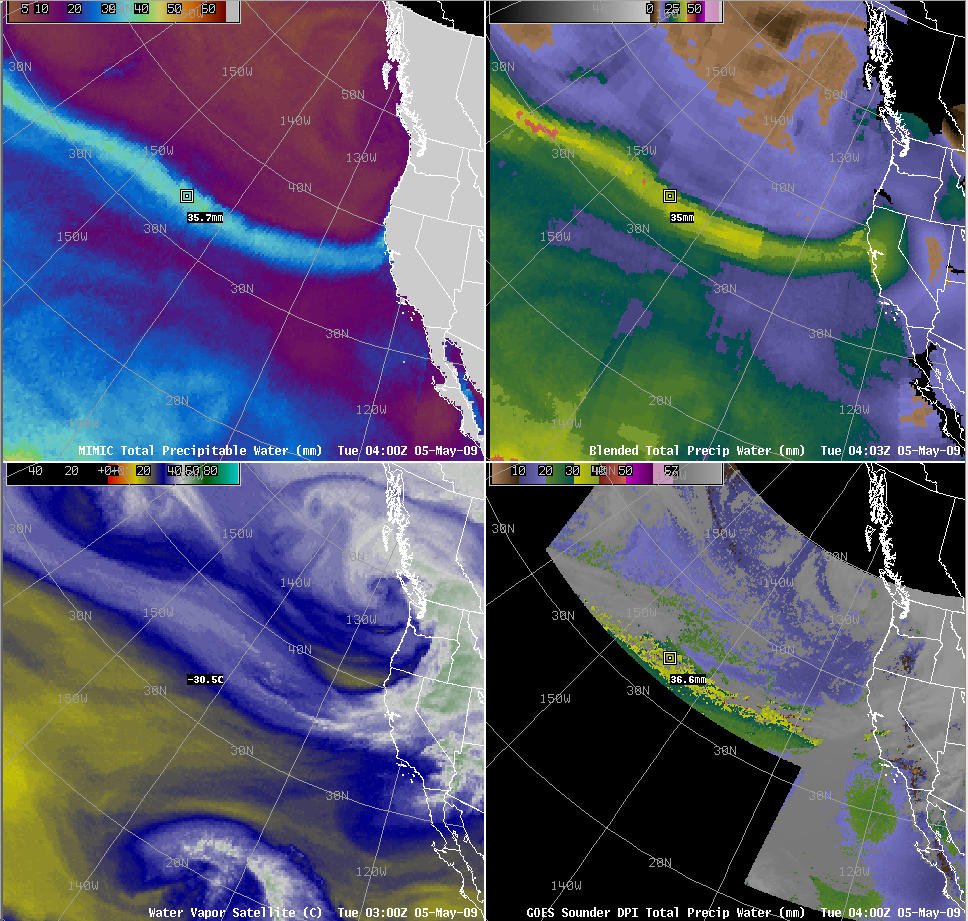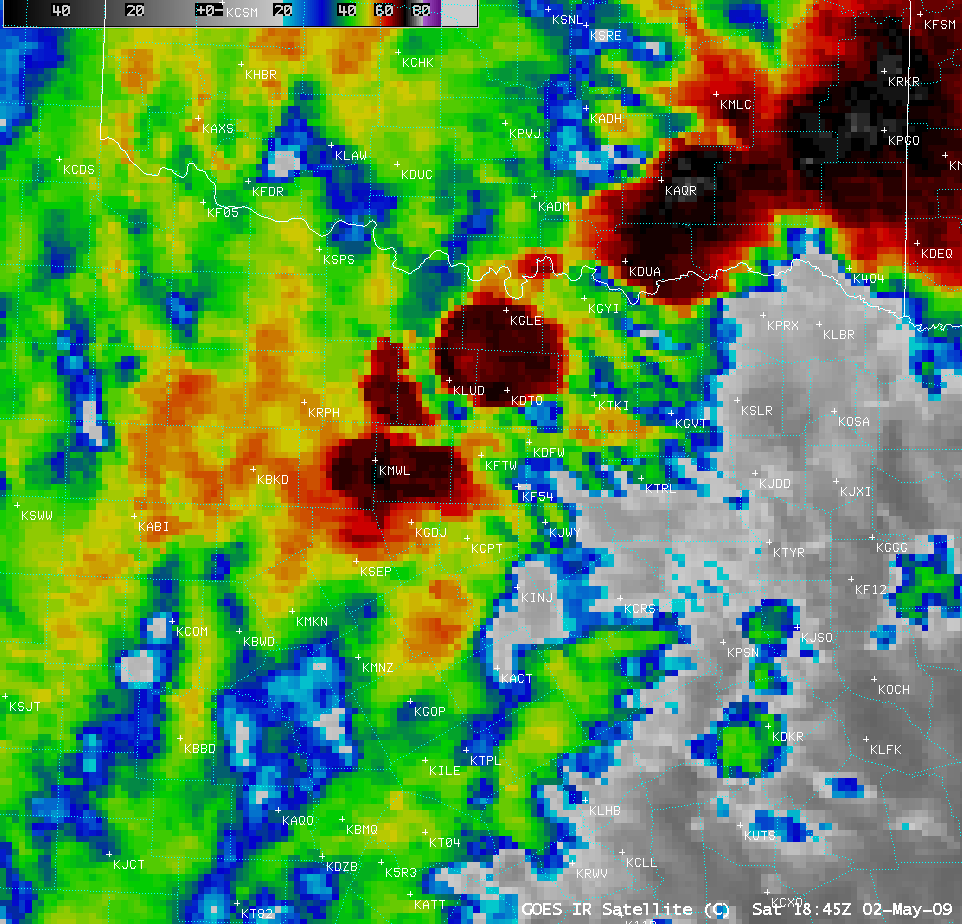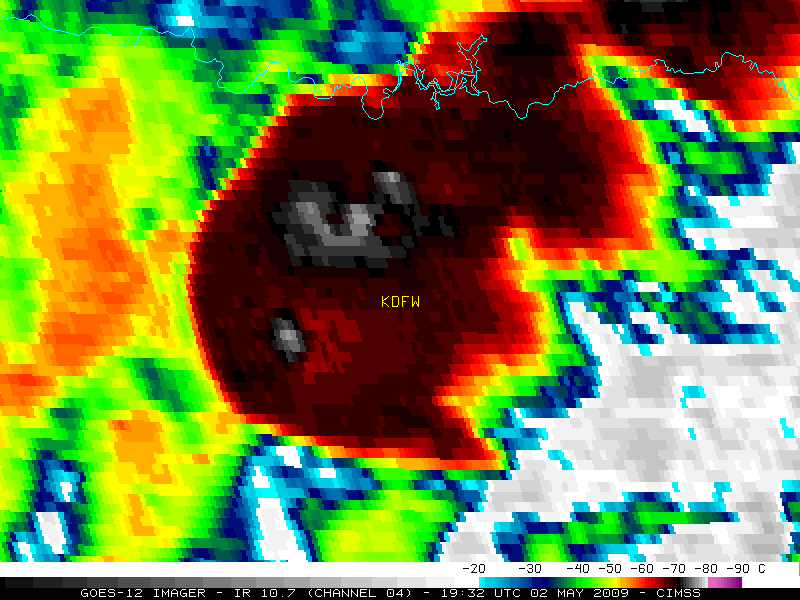An AWIPS image of the MODIS Sea Surface Temperature (SST) product (above) showed the complex structure of the Gulf Stream off the east coast of the US on 28 April 2009. The SST values were as high... Read More
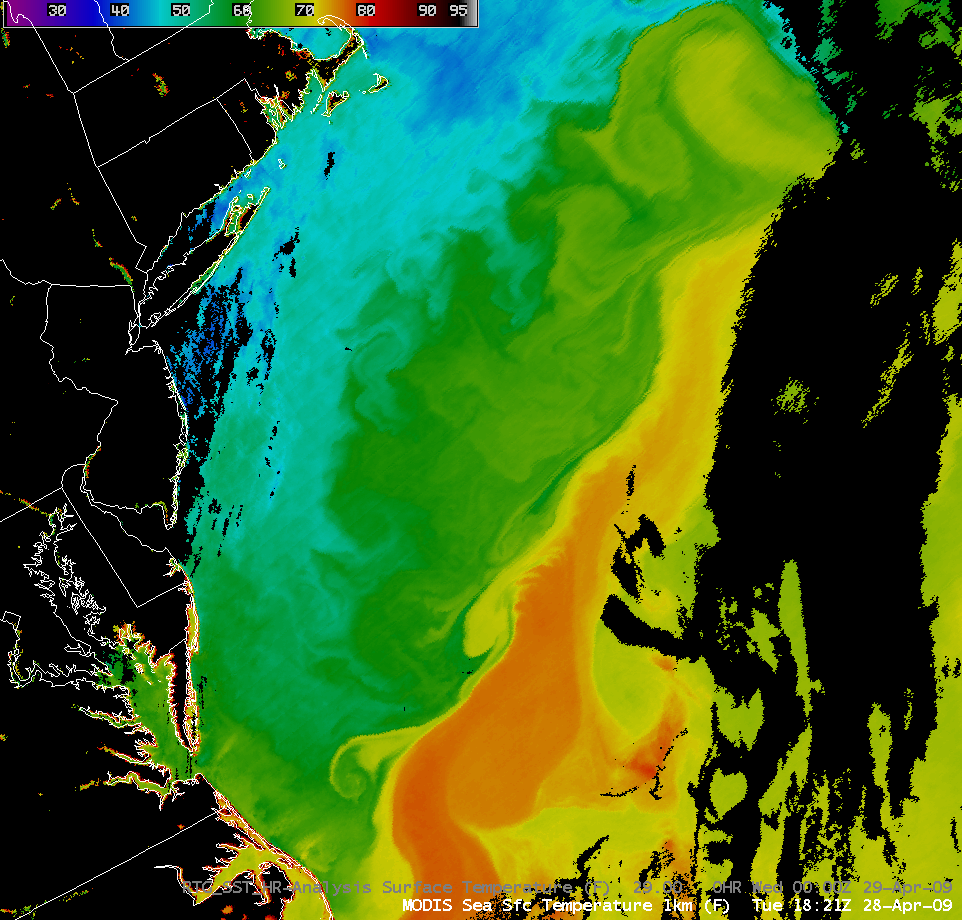
MODIS Sea Surface Temperature product
An AWIPS image of the MODIS Sea Surface Temperature (SST) product (above) showed the complex structure of the Gulf Stream off the east coast of the US on 28 April 2009. The SST values were as high as upper 70s F (darker red colors) in one of the warm eddies along the southern edge of the Gulf Stream, while water temperatures were as cold as the upper 30s to low 40s F (darker blue colors) closer to the mainland. Note the appearance of a number of warm and cold “meanders” and “eddies” along both sides of the Gulf Stream axis — these warm and cold water eddy features can reach to depths of almost 4000 m, and the water temperature within these eddies can have an influence on the productivity of fishing areas.
A comparison of the MODIS SST product with sea surface temperature data from the RTG_SST and the RTG_SST High-Resolution analyses (below) showed that both the RTG_SST and the RTG_SST_HRÂ had a difficult time properly depicting some of the more subtle meanders and eddies along either side of the Gulf Stream axis. At some locations, differences between the MODIS SST value and the RTG_SST/RTG_SST_HR analyzed SST values were as large as 4-6 degrees F.
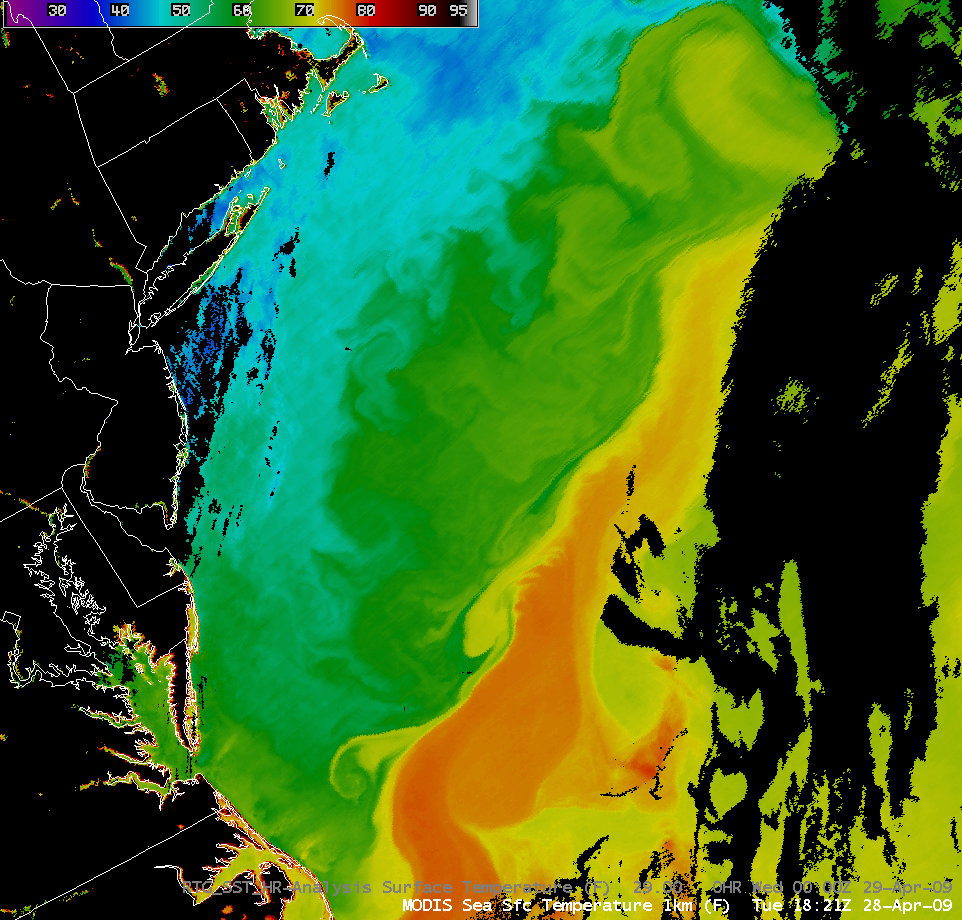
MODIS SST + "RTG_SST" and "RTG_SST High-Resolution" model temperature fields
A comparison of the 1-km resolution MODIS SST product with the corresponding 4-km resolution GOES-12 10.7 µm IR image (below) demonstrated the obvious advantage of better spatial resolution for detecting the smaller-scale meanders and eddies. Some of the darker green features seen on the GOES-12 IR image to the east of the Gulf Stream were clouds (which were “blacked out” by the cloud mask algorithm on the MODIS SST image).

1-km resolution MODIS SST product + 4-km resolution GOES-12 10.7 µm IR image
However, the clear advantage of GOES is the higher temporal resolution of the data — with images available more frequently, one can actually see the evolution and motion of the Gulf Stream itself, as well as some of the meanders and eddies along the periphery of the Gulf Stream during the 28-29 April period (below). The maximum speed of the Gulf Stream at the ocean surface is usually about 2.5Â meters per second (5.6Â miles per hour).
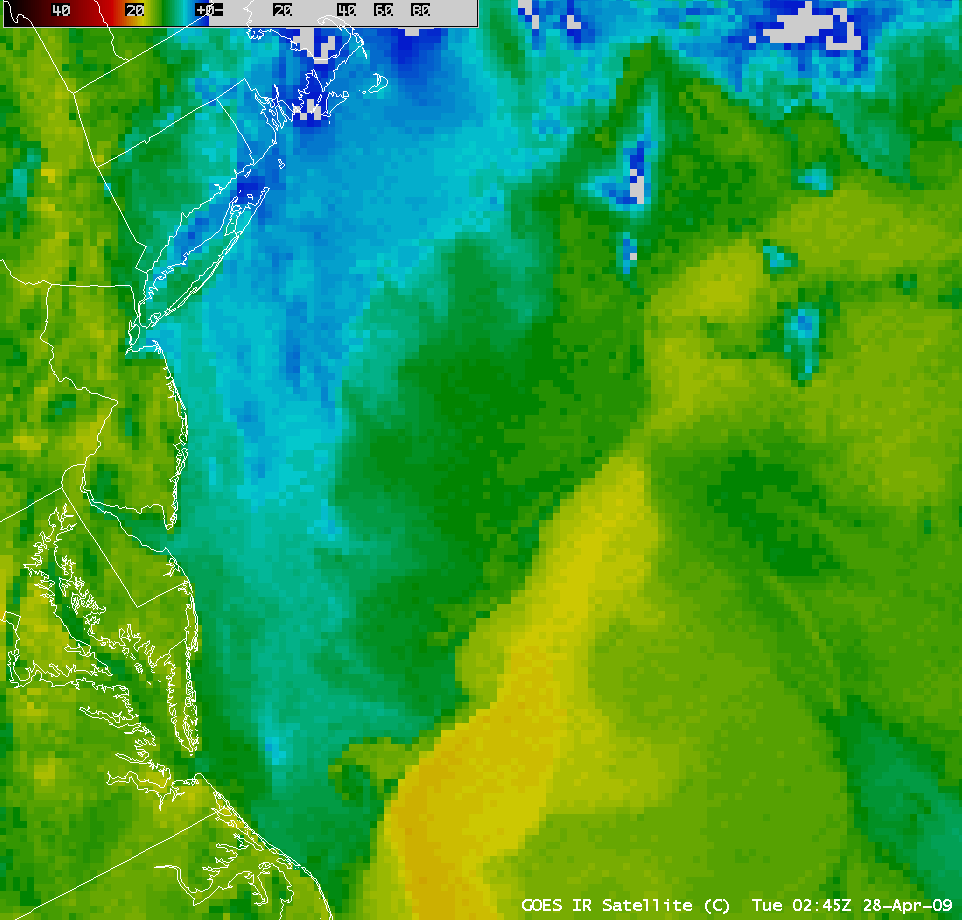
GOES-12 10.7 µm IR images
View only this post
Read Less


